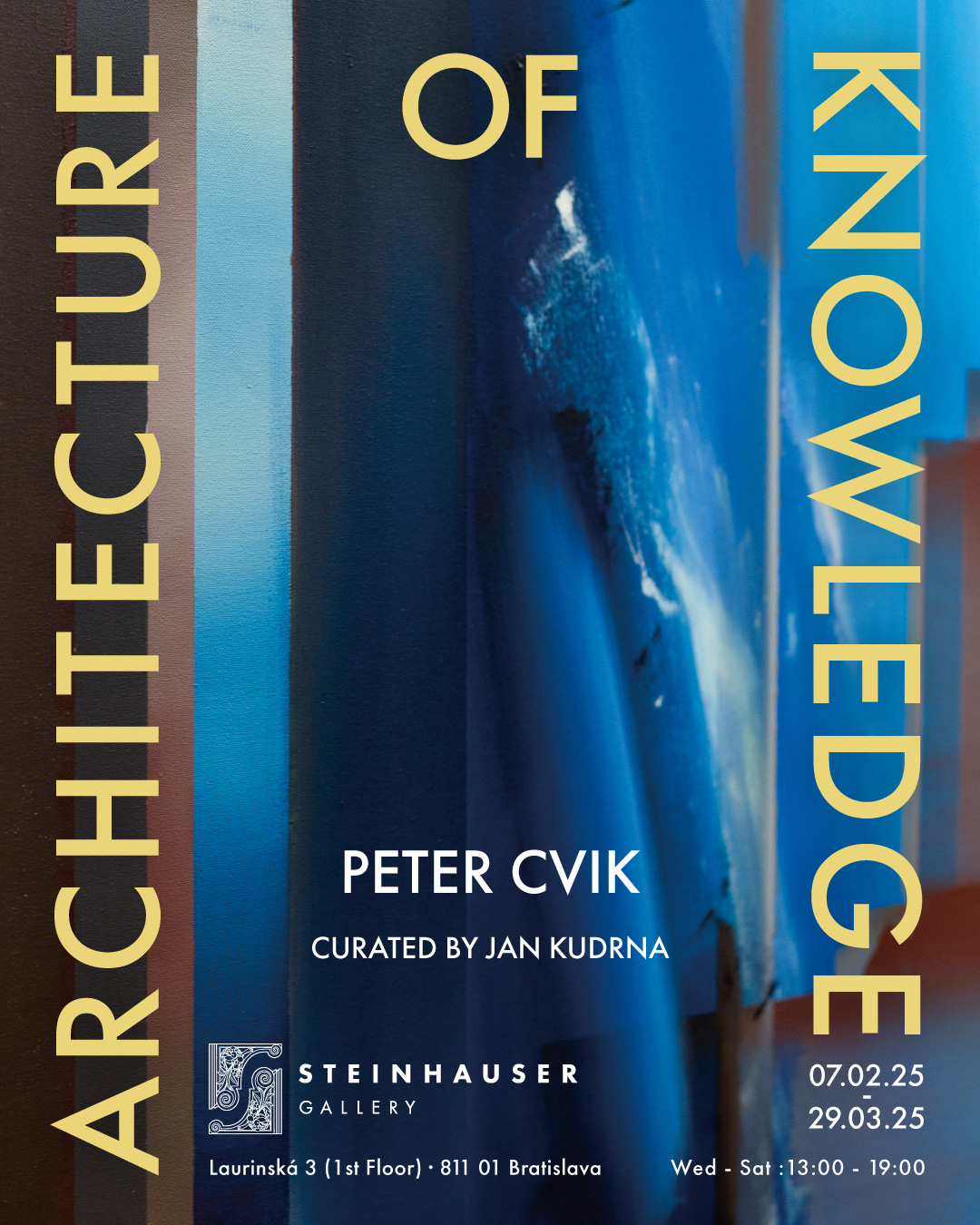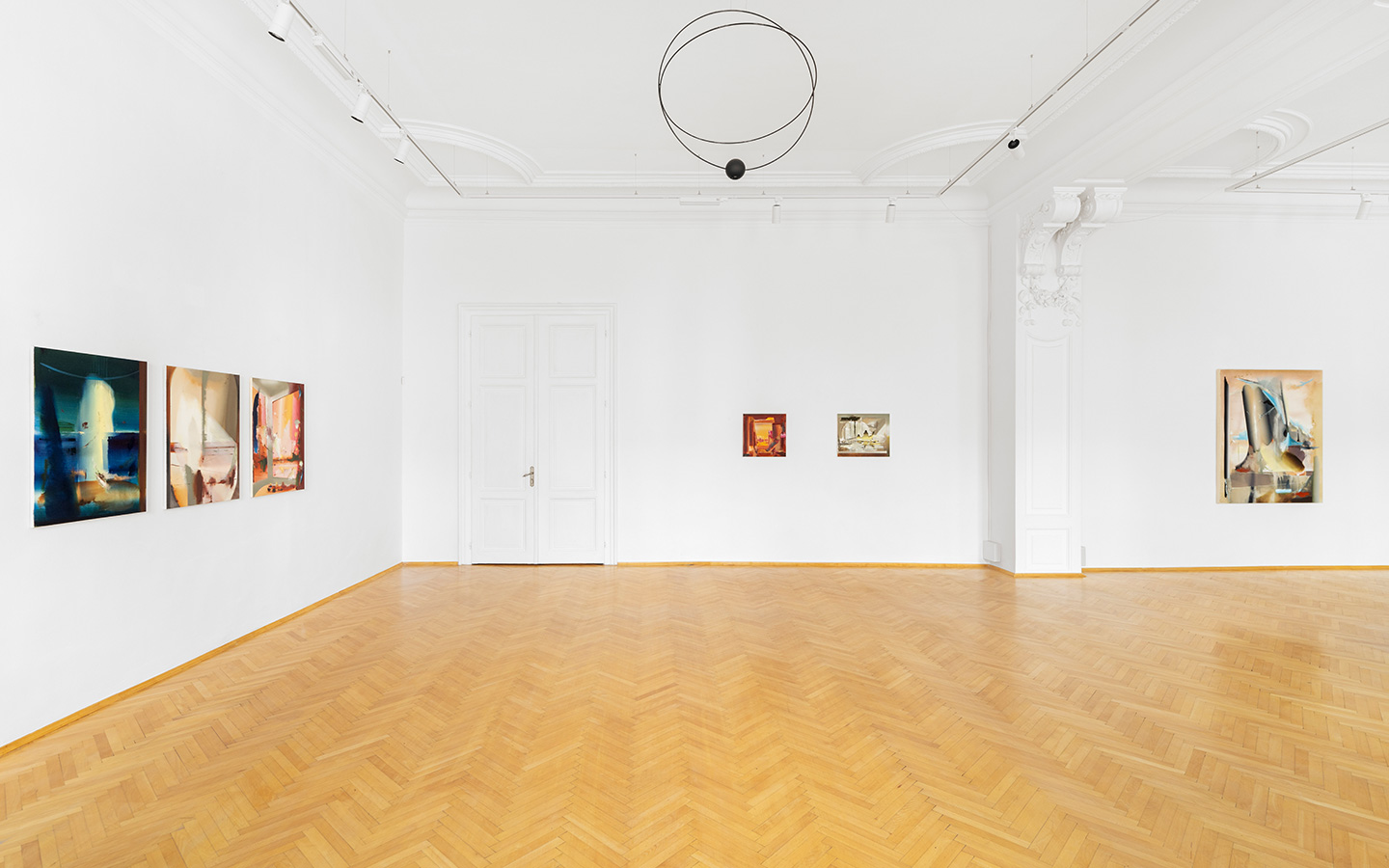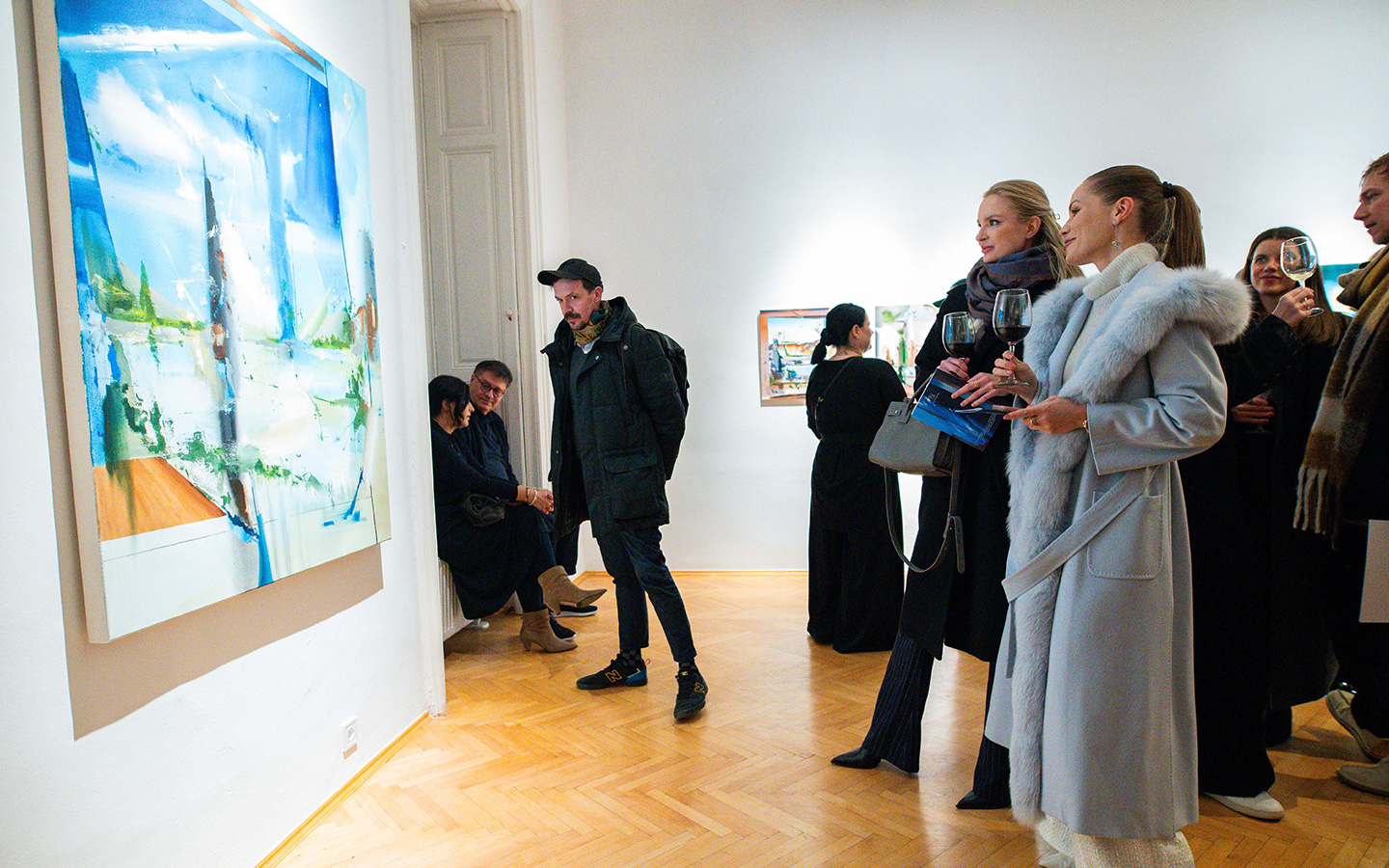ARCHITECTURE OF KNOWLEDGE BY PETER CVIK
Opening: 06.02.2025

By nature, human is an extraordinary being. On the one hand, there is a distinctly predefined physical and biological foundation that provides a coherent but somewhat limited perceptual framework. Conversely, there is an aspect that can be referred to as intuition or perhaps extrasensory perception. This realm transcends the official spectrum of one’s genetic makeup. The sense of space, the energy of site, or the perception of colour are essential traits for any artist. Peter Cvik‘s work is based on the interplay between the obvious, formal and naturally observable with the unspoken and extra-sensory. These two ends of the spectrum engage with the observer and with each other through the seemingly straightforward and logical matter of painting.
Initially, Cvik grasps the space and defines it by the space of the canvas (painting). At this point, he establishes a distinct framework defined by the x and y axes. Following this, he proceeds to create the piece. An action. The factual, the more apparent, if you will, sensory, part of the painting is intrinsically linked to architecture. It is a fixed component, both real and philosophical, clearly conforming to perspective and internal order. If we turn to science for insight, specifically to chemistry, architecture acts as the reagent at this stage. It generates a specific reaction with the substance under investigation. It constructs a setting that, in conjunction with the z axis, fosters ideal conditions for what we refer to in this case as an autonomous image.
The specific substance under investigation is extrasensory matter – Information that defines the portrayed place without offering a single factual clue. That is regardless of time, spatial depth or any affinity and similarity of the existing architecture to a specific, even remotely possible model. It represents factually indiscernible quantity or layer. Essentially because of his technique, in his current series of paintings Peter Cvik elevates this concept to a level previously unexplored in his artistic journey. Painting in oil has granted him a degree of liberal autonomy. The paintings, partly devoid of contours, distinct transitions and mechanisms of predefined order, acquire a significantly broader perspective. Yet, the airiness and lightness may make it more difficult for the less astute audience to grasp the work on the first sight.
The paintings present a greater challenge. They require a higher level of personal investment from the observer. Where acrylic paintings used to present theses, the artist now merely offers subtle suggestions. Still using the same language, this approach is rooted in the authenticity of painting, dedication to its laws, and unwavering commitment. Naturally, neither of the technical approaches conceals absolute truth, whether in black or white. It remains a fact that Peter Cvik is an artist who continues to persistently, patiently and humbly push his own limits that, some time ago, even crossed geographical boundaries.
Text: Jan Kudrna





















